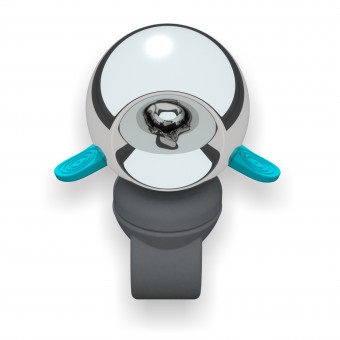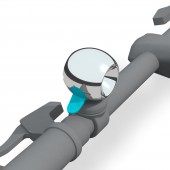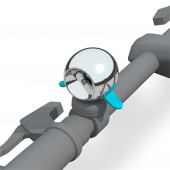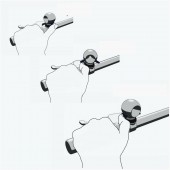Windbell Bicycle Bell by Chang-Yu Pan |
Home > Winners > #39879 |
 |
|
||||
| DESIGN DETAILS | |||||
| DESIGN NAME: Windbell PRIMARY FUNCTION: Bicycle Bell INSPIRATION: To capture the wind power produced by riding a bike is an easy task. This project uses the concept of small wind tunnel to transform a traditional metal bicycle bell into a brand new wind tunnel design using 3D printing. Such design adds the function of whistlers to bells, enhancing the safety of riding bikes. UNIQUE PROPERTIES / PROJECT DESCRIPTION: Bicycles and light electric motorcycles are both very quiet on the road. That is why bells are needed to alert pedestrians. Windbell’s design not only retains the advantage of traditional bells, but also increases the period of the whistle. This function makes it easier for riders who are going downhill or riding at a high speed, extending the time of the alerting sound and enhance the safety of the people on the street. With the design of small wind tunnels, Windbell’s resonance chamber can also produce high speed airflow, thus making whistles while riding at a slow pace. The whistles produced are completely powered by wind, with no batteries at all. OPERATION / FLOW / INTERACTION: The operation of Windbell is very easy. All the functions can be operated with a single thumb. While using the bicycle bell, the bagpipe will not make a sound. However, when the bagpipe is needed to make sounds, all there needs to be done is to turn Windbell with the thumb 90 degrees, making the air entrance of the bagpipe facing front, and the bagpipe will then start to whistle. PROJECT DURATION AND LOCATION: This project was proposed in May of 2013, and produced in November of the same year. It was displayed in the art center of Kao Yuan University in September of 2014. |
PRODUCTION / REALIZATION TECHNOLOGY: Windbell’s cover is made with 3D metal print, while the trigger is made with taulman 618 print. SPECIFICATIONS / TECHNICAL PROPERTIES: L: 35mm W: 55mm H: 40mm (without revolving base) TAGS: Bicycle bell, wind tunnel effect, 3D print, 3D print metal, wind power, RESEARCH ABSTRACT: Wind Bell prototype model is simulated the wind tunnel effect by COMSOL. It analysis the detail of speed of the wind go through the whistle. This simulation analysis show the speed of wind tunnel point is 4 times of the speed of inlet. CHALLENGE: The design has simulated the fluency of air flow via COMSOL and adjusted the small wind tunnel’s curved surface, allowing the airflow to be in accordance with the whistle’s speed when flown through the wind tunnel. ADDED DATE: 2015-02-26 14:39:52 TEAM MEMBERS (1) : Bo-An Lin IMAGE CREDITS: Chang-Yu Pan, 2014. |
||||
| Visit the following page to learn more: http://km.kyu.edu.tw/art/motorcycle/inde |
|||||
| AWARD DETAILS | |
 |
Windbell Bicycle Bell by Chang-Yu Pan is Winner in 3D Printed Forms and Products Design Category, 2014 - 2015.· Read the interview with designer Chang-Yu Pan for design Windbell here.· Press Members: Login or Register to request an exclusive interview with Chang-Yu Pan. · Click here to register inorder to view the profile and other works by Chang-Yu Pan. |
| SOCIAL |
| + Add to Likes / Favorites | Send to My Email | Comment | Testimonials | View Press-Release | Press Kit |
Did you like Chang-Yu Pan's 3D Printing Design?
You will most likely enjoy other award winning 3d printing design as well.
Click here to view more Award Winning 3D Printing Design.








